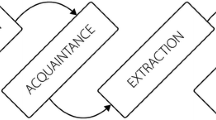Abstract
In the rapidly transforming landscape of modern world, people unconsciously refrain from interacting in public spaces, containing their communications that are extensive and universal, within home and relatively individually. The mass connectivity and technological advancement created new cultural values, thus altering the human perception of the world around him. This state of affairs is jeopardizing some of the cultural identities that have surmounted few centuries, shaping the values and associated customs of numerous generations. Furthermore, the computer technology became integrated exceedingly with the modern culture, which prompted us to introduce and explore the avenues of cultural computing that is the familiar ground of the modern society. With the intention of promoting values of distinct cultures, which will greatly assist in enhancing the social relationship, we have developed a framework to communicate literature through digital media, which introduced the platform to create Poetry Mix-up.



Similar content being viewed by others
Notes
Peranakans are the descendants of the very early immigrants to the Nusantara region including both the British Straits Settlements of Malaya and the Dutch-controlled island of Java.
References
Amoore L (2005) The global resistance reader. Routledge, USA
Bakardjieva M (2003) Virtual togetherness: an everyday-life perspective. Media, Cult & Soc 25(3): 291–313
Boguraev B, Kennedy C (1997) Salience-based content characterisation of text documents. In: Advances in automatic text summarization. The MIT Press, Cambridge, MA, USA, pp 2–9
Carey JW (1992) Communication as culture: essays on media and society. Routledge, London, UK
Cheok AD, Khoo ET, Liu W, Hu XM, Marini P, Zhang XY (2008) Confucius computer: transforming the future through ancient philosophy. In: SIGGRAPH ’08: ACM SIGGRAPH 2008 new tech demos. ACM, New York, pp 11–15
Fellbaum C (1998) WordNet: An electronic lexical database. The MIT Press, Cambridge, MA, USA
Geertz C (1973) The interpretation of cultures. Basic Books, New York
Hannerz U (1992) Cultural complexity: studies in the social organization of meaning. Colombia University Press, New York
Hu J, Bartneck BSC, Rauterberg M (2008) Alice’s adventures in cultural computing. Int J Arts Technol 1:102–118
Manovich L (2001) The language of new media. Massachusetts Institute of Technology, Cambridge, MA, USA
Pacey A (1983) The culture of technology. MIT Press, Cambridge, MA, USA
Song M, Elias T, Müller-Wittig W, Chan TKY (2003) Interacting with the virtually recreated peranakans. In: GRAPHITE ’03: Proceedings of the 1st international conference on computer graphics and interactive techniques in Australasia and South East Asia. ACM, New York, 223–ff
Song M, Elias T, Martinovic I, Mueller-Wittig W, Chan TKY (2004) Digital heritage application as an edutainment tool. In: VRCAI ’04: Proceedings of the 2004 ACM SIGGRAPH international conference on virtual reality continuum and its applications in industry. ACM, New York, pp 163–167
Tosa N (2007) Hitch-haiku. In: SIGGRAPH ’07: ACM SIGGRAPH 2007 art gallery. ACM, New York, p 250
Tosa N, Matsuoka S, Thomas H (2004) Inter-culture computing: zenetic computer. In: SIGGRAPH ’04: ACM SIGGRAPH 2004 emerging technologies. Los Angeles, p 11
Williams R (1961) The long revolution. Chatto & Windus, London
Author information
Authors and Affiliations
Corresponding author
Rights and permissions
About this article
Cite this article
Edirisinghe, C., Zhu, K., Ranasinghe, N. et al. Modeling literary culture through interactive digital media. Virtual Reality 15, 239–247 (2011). https://doi.org/10.1007/s10055-009-0147-9
Received:
Accepted:
Published:
Issue Date:
DOI: https://doi.org/10.1007/s10055-009-0147-9




